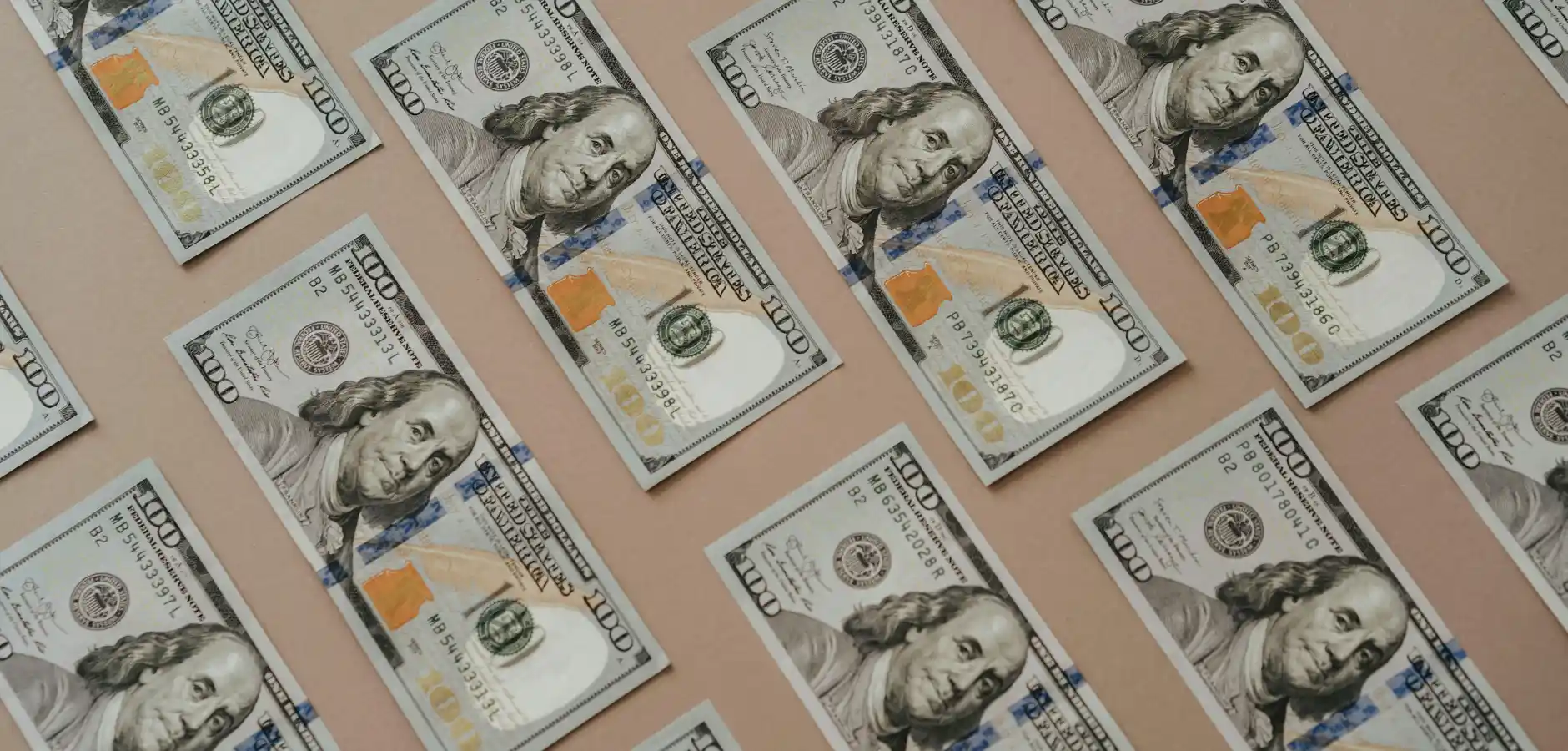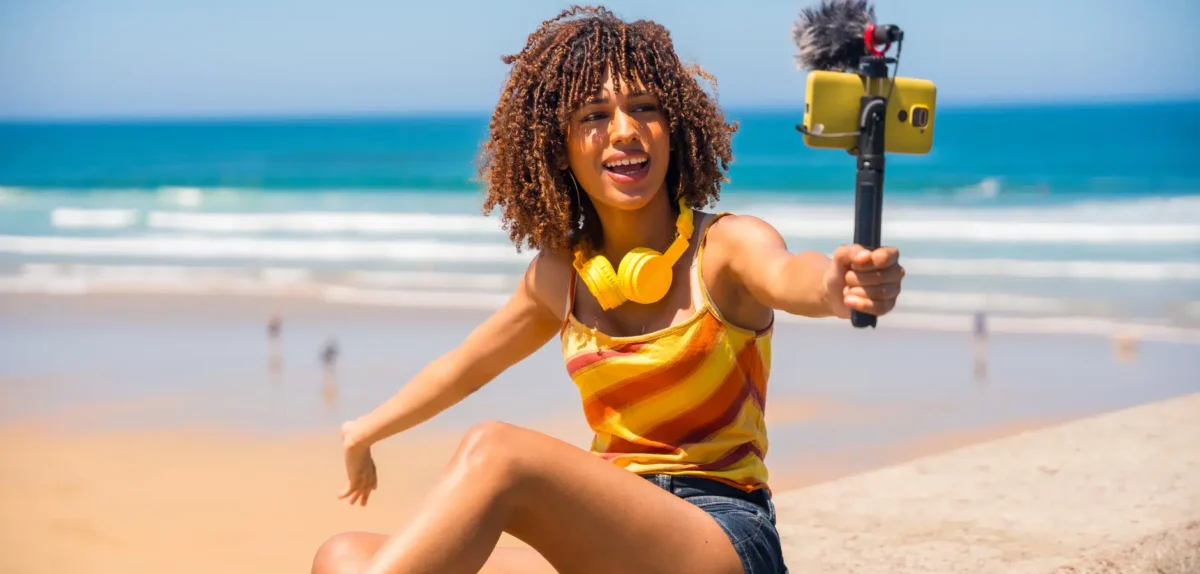Social media is now the world’s top advertising channel, with global spending set to hit $267 billion this year. This growth comes as no surprise, given social media’s profound influence on consumer spending habits.
Here’s how it works: You’re scrolling through Instagram or TikTok and see someone you follow—a lifestyle vlogger, fitness guru, or tech reviewer—recommending a new product.
It doesn’t feel like an ad. It feels like a friend’s recommendation, and suddenly, you’re checking out the product yourself.
That’s the power of influencer marketing. Unlike traditional ads:
- It feels personal
- It comes from someone you trust
- The recommendation feels authentic
- You’re actively engaging with the post
For brands, it’s one of the best ways to reach the right audience, build credibility, and drive results.
Content:
- What is influencer marketing and how does it work?
- What are influencer campaigns, and how do they work?
- Best practices for launching an influencer marketing campaign
- Influencer marketing tips for your brand
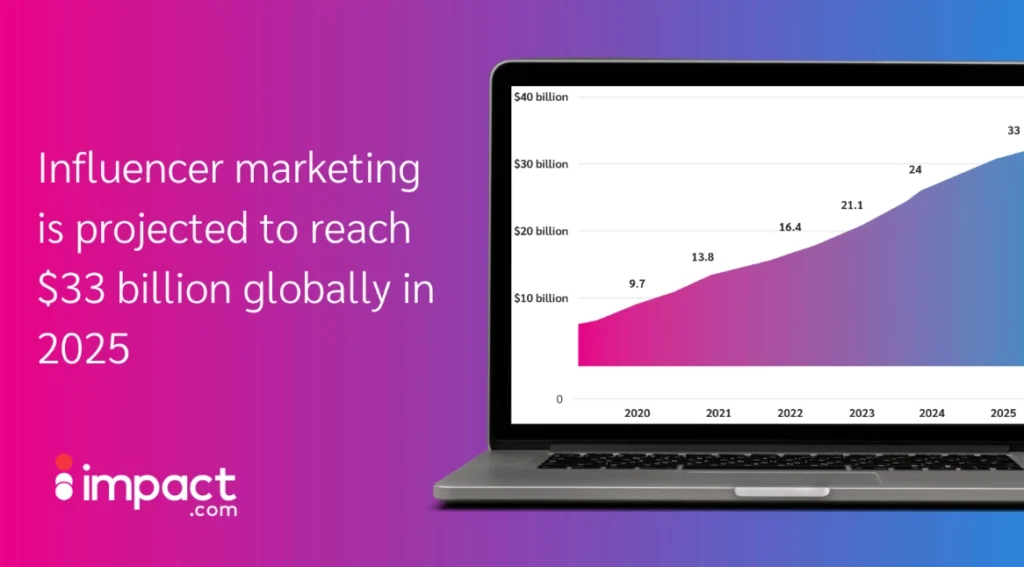
According to Statista, influencer marketing will reach $33 billion this year.
1. What is influencer marketing and how does it work?
Influencer marketing occurs when brands partner with creators—people with engaged online followings—to authentically promote products. Brands tap into creators’ trust and influence to drive awareness and sales. Creators may range from celebrities to niche content creators.
It works because 89 percent of people trust personal recommendations over other advertising channels.
Creators help drive brand awareness and purchasing decisions through product placement and endorsements on social media. Creators shape opinions, promote trends, and influence their audience’s purchasing decisions. They create engaging, relatable, or niche content to build their online presence.
Influencer marketing feels personal and relatable, whether it’s a beauty guru sharing their skincare routine or a travel vlogger showcasing a destination.
And it’s big business. In 2025, the industry is expected to reach nearly $33 billion globally, more than triple its value from 2019.
Here’s how influencer marketing works:
- Find the right creators: Not just the biggest names, but those whose audience matches your brand.
- Set clear goals: Define success upfront, from awareness to engagement or conversions.
- Create resonant content: Reviews, tutorials, and behind-the-scenes content perform well when they feel natural to the influencer’s audience.
Done right, influencer marketing builds trust, drives engagement, and turns followers into customers.
Why use influencer marketing?
Brands work with creators because they offer a direct line to the right audience—people who already trust their recommendations.
Instead of casting a wide net, influencer marketing helps brands connect with engaged communities.
Around 37 percent of consumers turn to creators for inspiration, highlighting how people want to follow seemingly authentic and relatable creators who share their interests and lifestyle choices.
Here’s why it works:
- Increase brand awareness: Creators have built-in audiences who trust them. Partnering with the right creator puts your brand in front of more people and boosts visibility.
- Reach the right audience: By choosing creators whose followers align with your target market, your message lands with people who actually care. More than 60 percent of consumers trust creators they perceive to be like them.
- Build trust and authenticity: People trust creators more than ads. A genuine recommendation from the right creator makes your brand feel more credible.
- Drive conversions: A well-executed influencer campaign doesn’t just create buzz—it inspires action. The right creator can turn followers into customers through clicks, sign-ups, or sales. 64 percent of consumers repeatedly purchase based on an influencer’s recommendation or review.
Different types of creators
Creators come in all sizes, from niche creators with tight-knit communities to celebrities with millions of followers. Each tier offers unique benefits, depending on your brand’s goals and budget.
Let’s start with the different sizes of creator followings:
Influencer tiers
Nano-creators (Less than 15k followers)
Who they are: Nano-creators may have small followings, but they bring big value. They engage deeply with their audience, often responding to comments and messages, making their recommendations feel personal and authentic. With authentic connections and niche passion, they engage 33 percent of audiences and are the most budget-friendly option.
Who works with them: Smaller brands see 1.69x more engagement per post from nano-creators compared to their own. Getty Images gained 15+ million impressions from a single campaign using a mix of smaller and mid-tier creators.
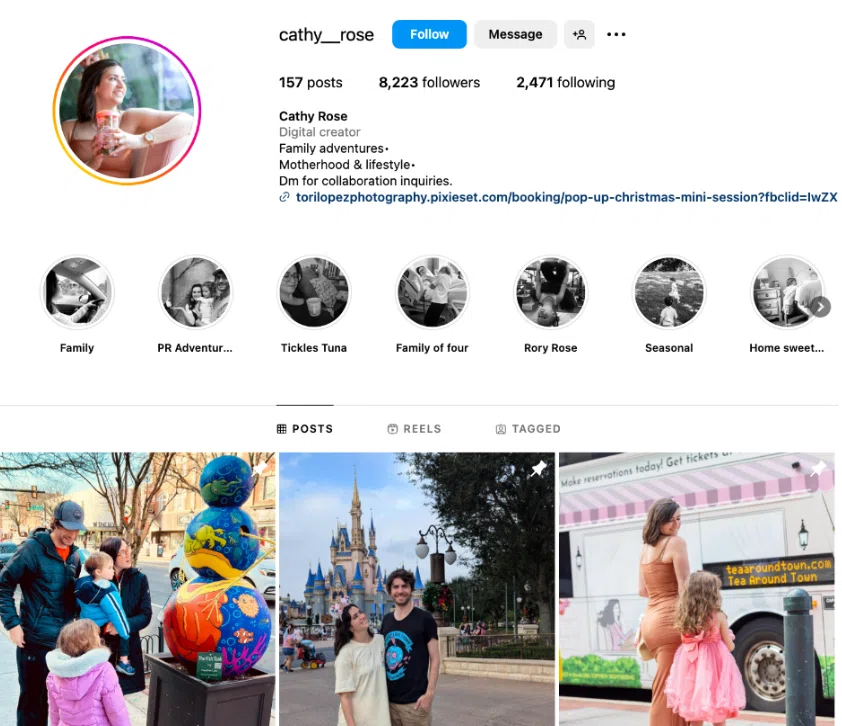
Nano-influencer @cathy__rose partners with family-oriented brands and experiences.
Micro-creators (15k-75k followers)
Who they are: The micro-tier includes creators between 15,000 and 75,000 followers. Micro-creators have built engaged, loyal communities. They feel accessible and relatable, which makes them the most popular influencer tier, connecting with 46 percent of audiences.
Who works with them: Small and mid-sized brands find this tier highly effective, with posts driving 2.4 to 6.7 times more interactions than their own social media. Larger brands often work with multiple micro-creators to maximize reach.

Micro-creator @premiere_gal shares video editing tutorials and tools for creators.
Mid-tier creators (75k-250k followers)
Who they are: Mid-tier creators hit the sweet spot between reach and engagement. They have larger audiences than micro-creators, but still feel accessible enough to build trust.
While mid-tier creators appeal to large audiences, they can commit more time to brands and directly connect with followers, compared to celebrities who don’t have the bandwidth.
Who works with them: A strong choice for mid-sized brands looking to scale their reach without losing engagement. They also offer smaller brands an efficient way to generate buzz.
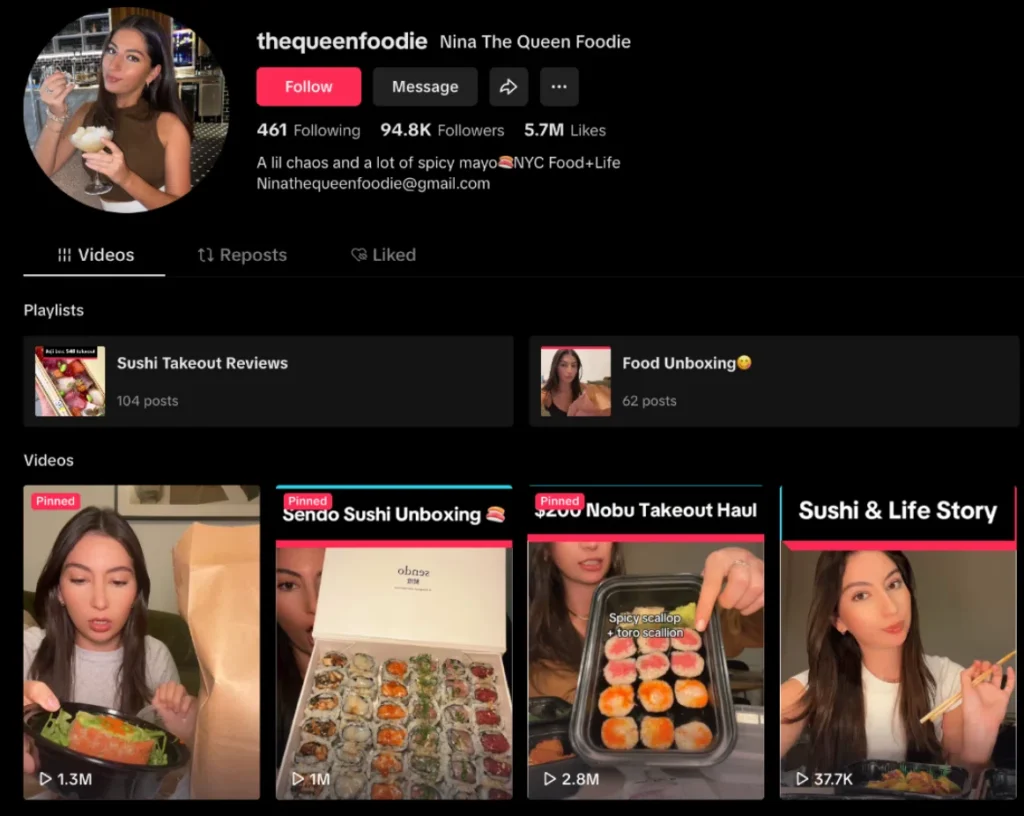
Mid-tier TikTok creator @thequeenfoodie shares food-related content, including restaurant reviews, street food explorations, and cooking recipes
Macro-creators (250k-1m followers)
Who they are: Macro-creators are industry experts, trendsetters, and well-known personalities who dominate their niche. Their content reaches wide audiences, but remains topic-focused.
Who works with them: If they can afford it, just about anyone can get attention by hiring these creators. Larger brands use macro-creators to maximize visibility, as their posts drive 2.9 times more interactions than the brand’s own content.

TikTok macro-influencer @davisburleson is known for his TikTok interview series “What’s Poppin? With Davis!”
Mega-creators [celebrities] (1m+ followers)
Who they are: The celebrity creators—actors, musicians, athletes, and media personalities. Some individuals reach this level of influence through their notoriety, while most gain fame through their work.
While they offer massive reach, their personal connection with audiences tends to be weaker. These creators only hold three percent of consumer popularity.
Who works with them: Only big brands with large budgets typically work with mega-creators.
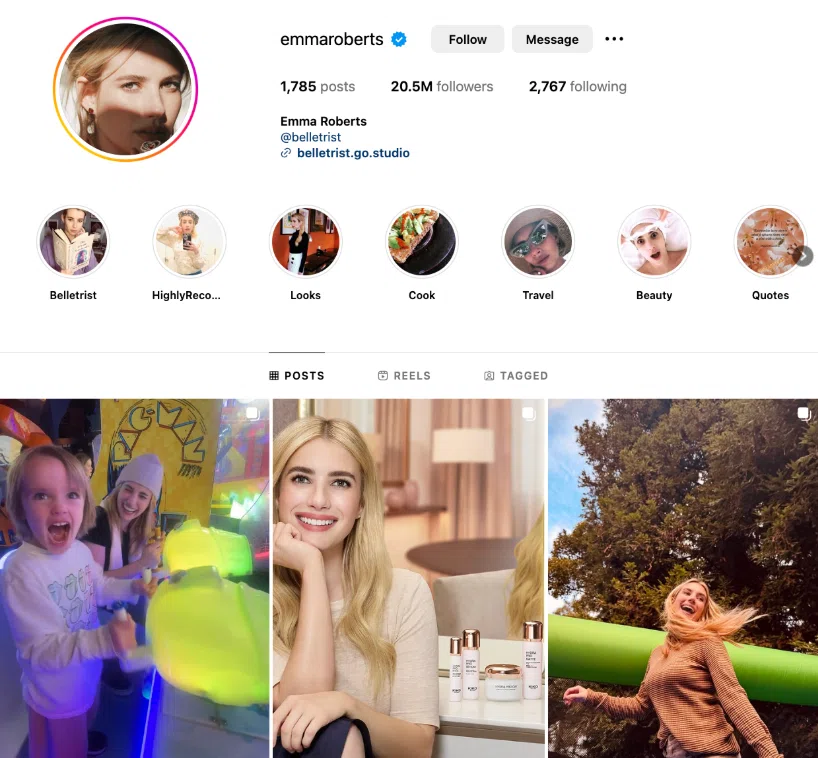
Actress @EmmaRoberts boasts more than 20 million Instagram followers, balancing her feed with personal content and brand deals ranging from skincare to fashion.
Modern content creator types
Every creator offers a unique perspective, mastering diverse content styles to engage distinct audiences and meet specific brand requirements.
Here’s a quick breakdown of seven key creator types:
1. Educational creators: Think tutorial makers, industry experts, and thought leaders breaking down complex topics.
Brothers Hank and John Green (@Vlogbrothers) have built a vast educational platform on YouTube, covering topics from science to literature. Their channels, such as Crash Course and SciShow, break down complex subjects into engaging, digestible videos.
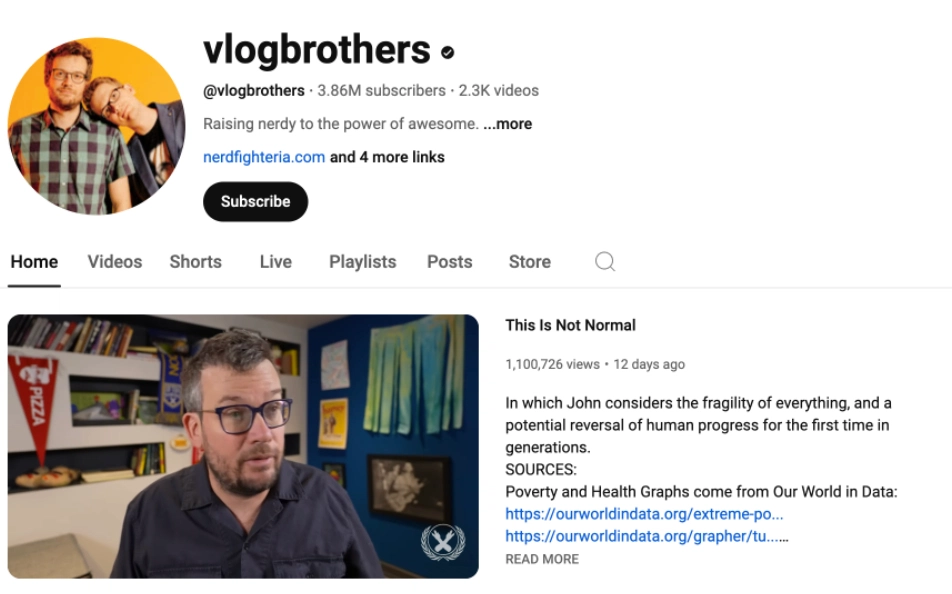
@vlogbrothers have nearly four million subscribers on YouTube
2. Entertainment creators: These are comedians, performers, and storytellers who keep audiences engaged through humor, reactions, and drama.
Lilly Singh (@lilly) is a comedian and actress who gained fame on YouTube with her humorous skits and relatable content. Her energetic storytelling and comedic sketches have earned millions of subscribers across platforms including Instagram.
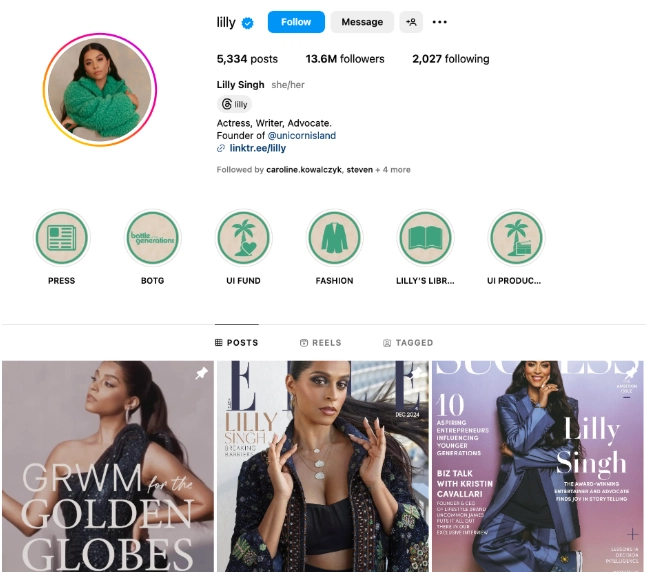
Lilly Singh’s sense of humor has allowed her to build an empire from her personal brand.
3. Lifestyle creators: From travel vloggers to personal development coaches, these creators offer glimpses into aspirational (or relatable) daily life.
Casey Neistat (@casey) is a filmmaker and vlogger known for his daily vlogs, which offer a glimpse into his adventurous life.

Casey’s high-quality videos cover travel, personal experiences, and motivational topics.
4. Expert and authority creators: Specialists who provide professional insights, whether it’s industry analysis, B2B advice, or technical expertise.
Jack Edwards (@jack_edwards) is an English YouTuber who provides insights into literature and university life. He shares book recommendations, study tips, and educational content, establishing himself as an authority in the literary community.

Dubbed YouTube’s resident librarian, Jack Edwards is a go-to account for expert book recommendations.
5. Community builders: Niche leaders, livestreamers, and social activists who unite people around shared interests and causes.
Moohoodles is a Twitch streamer and science communicator who has built a community around space and science discussions.
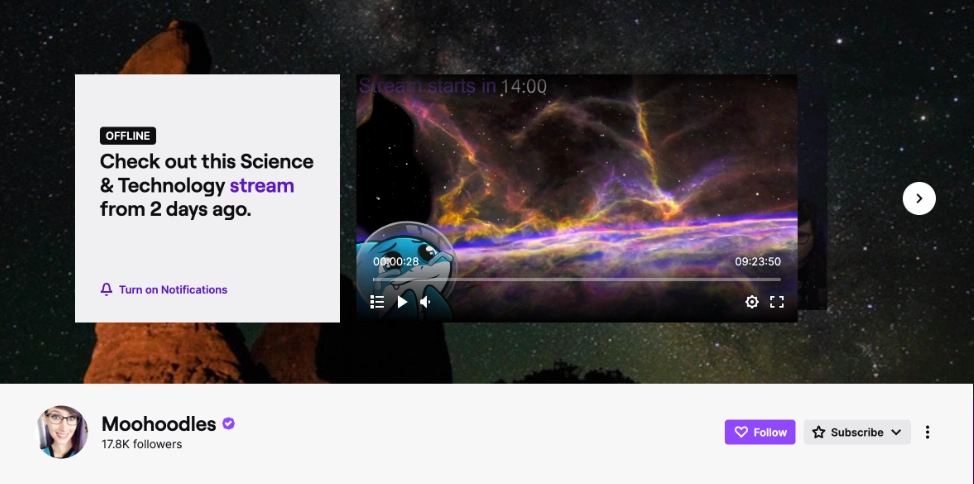
Moohoodles collaborates with organizations like NASA to bring educational content to their audience.
6. Multi-format creators: Cross-platform storytellers blending video, podcasts, newsletters, and social media for a multi-channel experience.
Marques Brownlee (@mkbhd) is a leading tech creator who excels across multiple social channels, including TikTok, Instagram, and X. With millions of followers across each platform, Marques also produces in-depth YouTube reviews, hosts the Waveform podcast for tech discussions, and shares bite-sized insights on Twitter and Instagram.
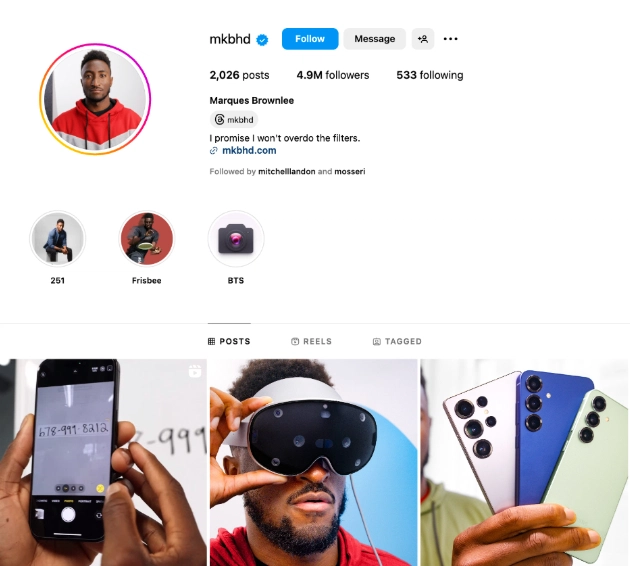
Marques Brownlee knows how to keep his audience hooked with a mix of content across platforms. With almost 20 million YouTube subscribers, his videos are a go-to for tech fans.
7. Brand builders: Entrepreneurs, product creators, and business owners using content to grow their brand and audience.
Grace Beverley (@gracebeverley) is a British entrepreneur who has successfully built her brands, TALA and Shreddy, by sharing fitness, entrepreneurship, and sustainable fashion content on Instagram, YouTube, and LinkedIn.
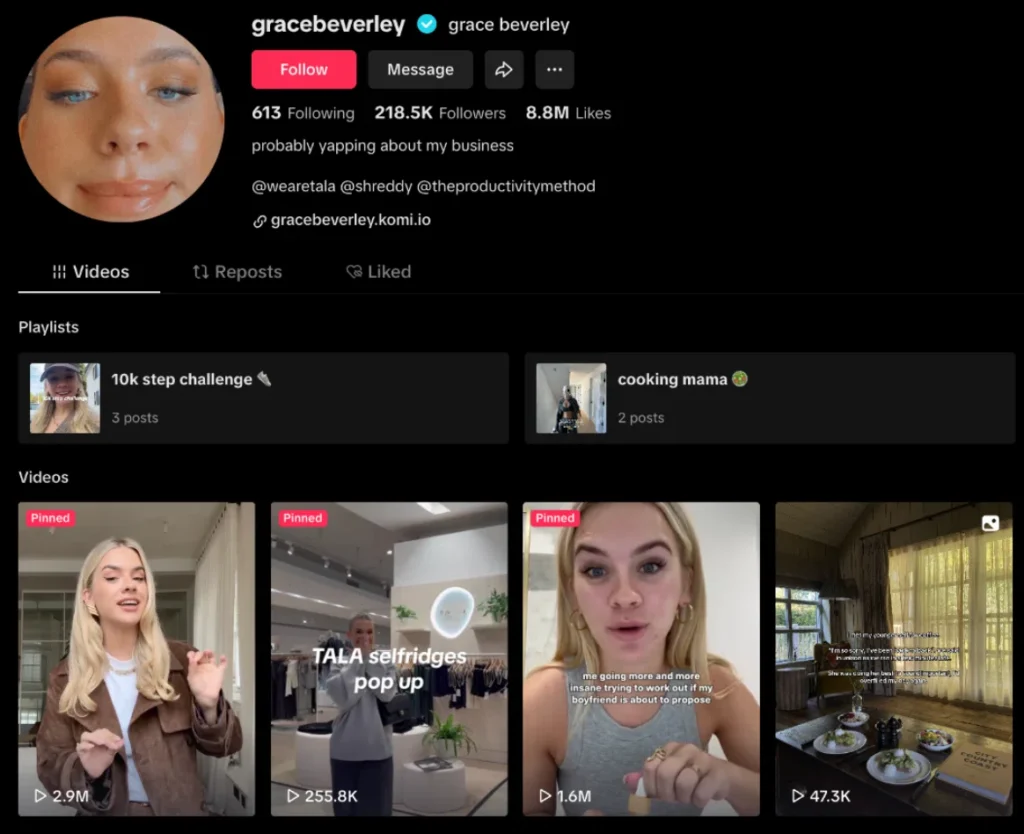
Grace’s strategic use of these platforms helped her connect with a diverse audience and build a successful business.
How do social media creators get paid?
Traditional methods
Brands pay creators in many ways, depending on the campaign, budget, and goals. Some deals are straightforward, while others tie payment to performance.
Here are the seven most common models:
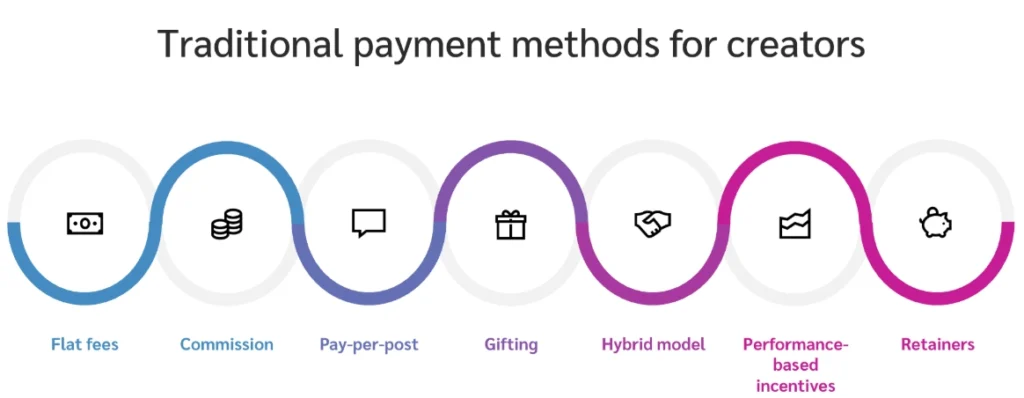
Traditional payment methods:
- Flat fees – A fixed payment per post, video, or campaign, agreed upon upfront. Most creators prefer this model when working with a brand for the first time.
- Commission – Influencers earn a percentage of sales or conversions they drive, making this model popular in affiliate marketing.
- Pay-per-post – A set fee for each post, story, or video, based on the influencer’s reach and engagement. Ideal for short-term collaborations.
- Gifting – Rather than offering cash, brands provide free products or services, making it a popular choice for those with limited budgets or smaller-scale collaborations. While it’s an excellent way to gain exposure, some creators prefer it in addition to a flat fee.
- Hybrid model – A mix of methods, such as flat fees plus commission or gifting with performance incentives. More than 80 percent of creators prefer this when paired with a base payment.
- Performance-based incentives – Payment depends on results, such as clicks, sales, or engagement goals.
- Retainers – A recurring fee (often monthly) for ongoing brand partnerships, ensuring consistent content and promotion.
Each model has its pros and cons, and many brands tailor payments to balance budget, risk, and impact. Learn more about it in our blog here.
Modern influencer compensation
Beyond traditional payments, brands and platforms are getting creative with compensating creators.
Here are some emerging trends shaping the future of influencer earnings:
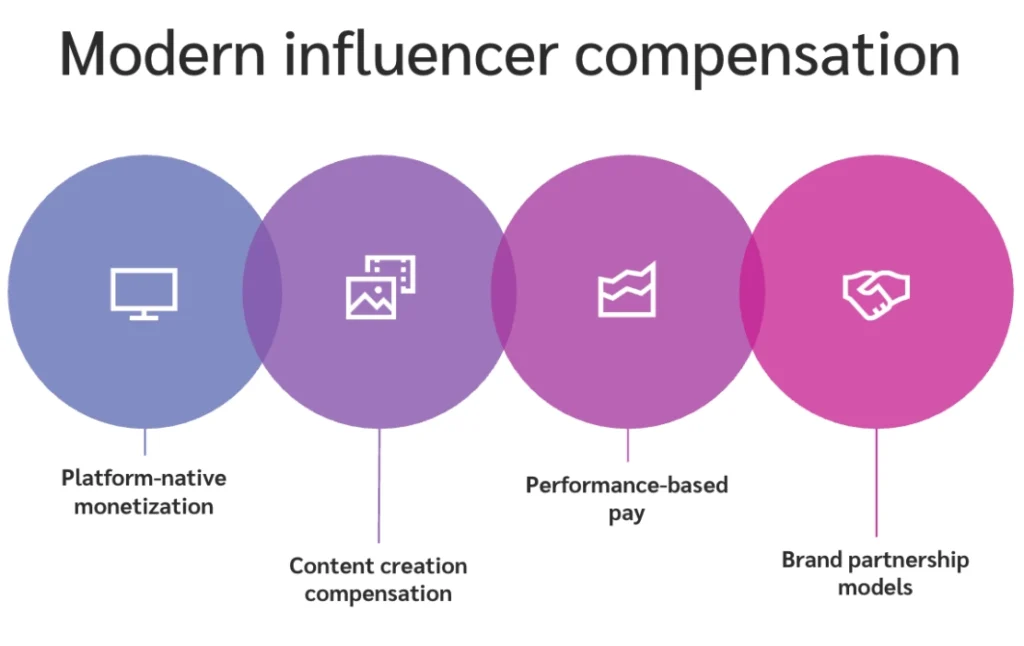
Platform-native monetization – Platforms such as YouTube, TikTok, and Instagram now offer creator funds, ad revenue sharing, and platform-specific bonuses for high-performing content. Live streamers can also earn through virtual gifts and subscriptions.
Content creation compensation – Brands invest in more than influencer promotion—they’re licensing UGC (user-generated content), commissioning white-label content, and even letting creators take over their brand voice. Some brands use AI-assisted content creation rights, where creators train AI models on their style.
Performance-based pay – Beyond standard affiliate deals, social commerce, and live shopping platforms now offer click-per-action (CPA) models, lead generation payouts, and conversion-based bonuses to reward creators for results.
Brand partnership models – Influencers are no longer only promoting products, they’re also co-creating them. Revenue-sharing partnerships, co-branded product lines, and long-term ambassadorships with equity stakes are becoming more common. Some creators secure category exclusivity, meaning they work exclusively with one brand in a specific space.
Influencer compensation is evolving fast, blending creativity, commerce, and collaboration. As the industry matures, expect even more innovative ways for creators to earn.
What types of brands work with social media creators?
Almost every industry has embraced influencer marketing, but some brands are a natural fit. Here are a few that frequently collaborate with creators:
Fashion and beauty: Clothing, makeup, and skincare brands partner with creators for product try-ons, tutorials, and lifestyle content that feels authentic and aspirational.
Chriselle Lim is a fashion stylist and digital creator who founded “The Chriselle Factor,” a blog that provides insights into the latest fashion items, beauty products, and style trends. She collaborates with clothing and skincare brands to create authentic and aspirational content.

Brands such as Augustinus Badier regularly partner with Chriselle Lim.
Lifestyle and home goods: Creators promote furniture, decor, and everyday essentials by integrating them into their routines.
Fitness and wellness: From supplement brands to workout gear, creators inspire healthier lifestyles through product integrations, routines, and challenges.
Jason O’Brien is a personal trainer and fitness creator who shares workout routines and motivational content to help others achieve their fitness goals.

Jason’s Instagram features various exercise demonstrations and fitness tips, catering to individuals seeking guidance in their fitness journey.
Food and beverage: Restaurants, meal kits, and snack brands collab with creators on recipes, reviews, and taste tests.
Rina (eatwithrina) is a vegan food creator who offers recipes, tips, and tricks for those interested in a vegan lifestyle. She often partners with plant-based food brands, aligning perfectly with her personal brand and audience.

Rina uses her platform to partner with like-minded brands.
Travel and hospitality: Tourism boards, hotels, and airlines rely on creators to bring destinations to life through engaging visuals and first-hand experiences.
Tech and gadgets: Whether it’s a smartphone, an app, or a smart home device, creators help brands showcase how their tech fits into daily life.
Gabe (@make.one.studio) is a tech enthusiast who shares content related to setups, video games, and technology. He provides insights into various tech products and gaming setups, making technology more accessible.
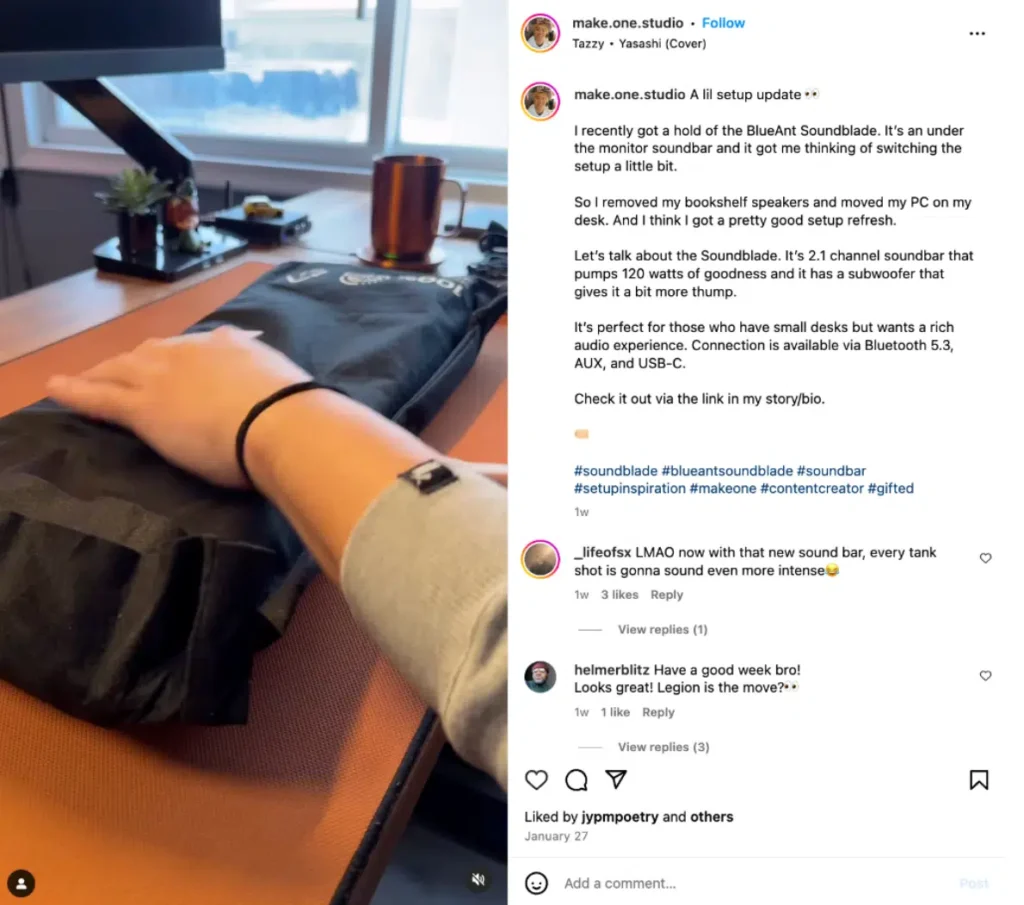
Gabe uses Instagram to share honest reviews about new tech releases.
Parenting and family: Baby products, educational tools, and family-friendly brands collaborate with creators to reach engaged parent communities.
Sustainability and eco-friendly brands: Green brands work with creators to highlight eco-conscious products and encourage sustainable habits.
Entertainment and gaming: Movie studios, streaming platforms, and game developers use creators to generate buzz before a launch.
From niche startups to global giants, brands of all sizes work with creators to connect with their ideal audience in a more personal way.
What platforms do creators use? [The big three]
Instagram, TikTok, and YouTube dominate the influencer space, each offering unique strengths for brands and creators.
Instagram is all about visuals, making it the perfect place for lifestyle, fashion, beauty, and e-commerce brands to shine with stunning content and creative formats.
Despite declining engagement, 87 percent of creators still prefer Instagram for brand collaborations, making it a top choice for influencer marketing.
How brands and creators use Instagram: Brands love Instagram for showing off products, teaming up with influencers, and connecting with their audience through Reels, Stories, and Carousels. Creators use it to build their personal brand, chat with followers, and earn money with sponsored posts and shopping features.

Key features
- Content formats: Reels (priority content), Stories, carousels, IG Live, Guides
- Monetization tools: Creator Marketplace, branded content tools, Collab posts
- Shopping features: Product tags, Shop tab, live shopping (regional)
- Engagement tools: “Add Yours” stickers, improved polls, multiple link stickers in Stories
Audience and engagement rates
- Largest user demographic: Most Instagram users are Gen Z and Millennials, with 32% under 25 and 31 percent of users under 45 years old.
- Engagement rate: Brands can see up to 0.76 percent engagement rates, but this varies by industry.
- Platform preference: This year, 84 percent of U.S. marketers will use Instagram for influencer campaigns.
Latest Instagram updates
Content and engagement tools
- Reels are now the platform’s primary focus, with the algorithm prioritizing short-form videos.
- Stories have features including “Add Yours” stickers, improved polls, and interactive emoji reactions in DMs.
- Feed posts are still relevant, but no longer prioritized by the algorithm.
- Guides, Live features, and Highlights offer ways to showcase evergreen content.
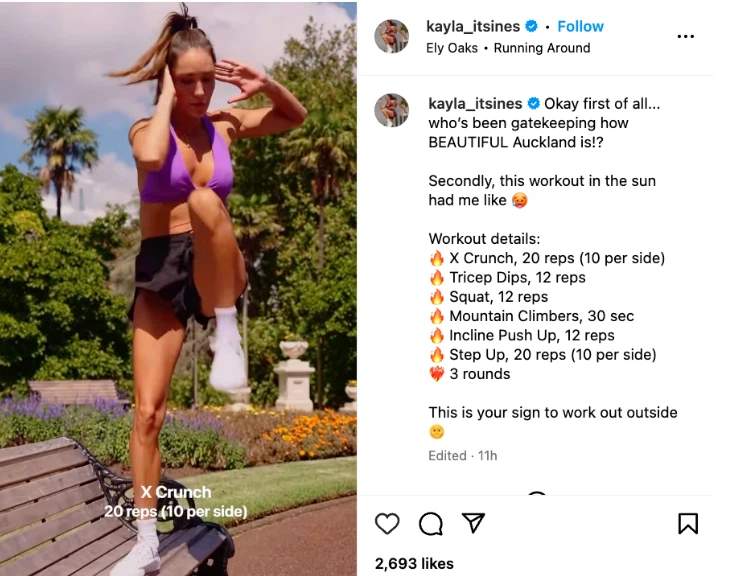
Instagram Reels cater to short-form videos, offering educational and entertaining content.
Business and monetization tools
- Creator Marketplace helps brands find creators for collaborations.
- Branded content tools and Collab posts streamline co-created content.
- Music licensing options give creators more creative flexibility.
Shopping features
- Product tags, Shop tabs, and live shopping (available in select regions) make Instagram a hub for social commerce.
- Link stickers (replacing swipe-ups) now allow creators to share multiple links.
TikTok
TikTok is all about short, viral content—think trends, challenges, and unfiltered stories. Its smart algorithm knows how to get your videos in front of the right people, making it the go-to platform for building brand awareness and connecting with Gen Z and Millennials.
How brands and creators use TikTok: Brands use TikTok to launch viral challenges, collaborate with creators, and leverage trending content for organic engagement. Creators monetize through sponsored content, TikTok Shop, and interactive features such as live streams and virtual gifts.
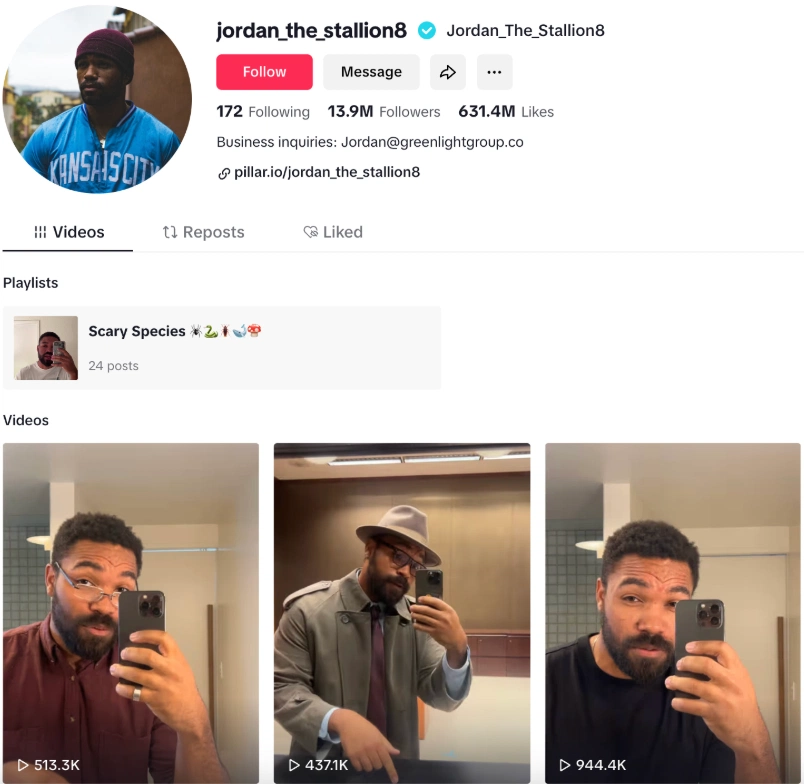
Key features
- Content formats: Short-form videos (up to 10 minutes), Duets, Stitches
- Monetization tools: Creator Fund, Creator Marketplace, LIVE subscriptions, virtual gifts
- Business features: TikTok Shop, Spark Ads, Business Suite
- Editing tools: Text-to-speech, voice effects, Green Screen
Audience and engagement rates
- Largest user demographic: Globally, men under 35 account for a larger share of viewers (37 percent) compared to women in the same age group (29 percent).
- Engagement rate:
- Nano-creators: 11.97 percent
- Mega-creators: 9.67 percent
- Platform preference: More than half of brands use TikTok for influencer campaigns
Latest TikTok updates
Video and editing tools
- Videos can now be up to 10 minutes long, allowing for more storytelling and in-depth content.
- Advanced editing tools such as text-to-speech, voice effects, and Green Screen add more creative possibilities.
Creator monetization and business tools
- Creator Fund, Creator Marketplace, and Creative Center help creators earn and collaborate with brands.
- LIVE subscriptions, tips, virtual gifts, and Series (paid content) provide multiple income streams.
- TikTok Shop allows brands to sell directly in the app.
- Advanced ad tools simplify brand promotions, including Spark Ads and Business Suite.
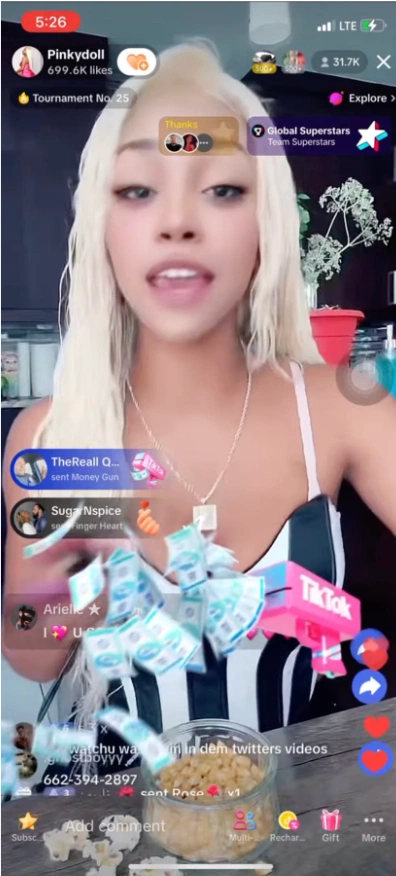
TikTok creators are monetizing their platform through live streams, where fans send virtual gifts that convert to cash. Take @pinkdollreal, who spends hours connecting with her audience in real time.
Content and engagement features
- Duets, Stitches, and Templates boost collaboration and viral trends.
- Effects House lets creators build and use custom augmented reality (AR) effects.
- Photo Mode and the Commercial Content toggle provide new options for static and branded content.
YouTube
YouTube is the go-to spot for long-form videos and deep-dive content. Consumers love the platform for its high-quality content—it’s perfect for tutorials, vlogs, and educational videos. Plus, with more than 2.7 billion monthly users, it’s a great way for brands to get discovered and stay relevant over time.
How brands and creators use it: Brands use YouTube for product reviews, explainer videos, influencer sponsorships, and video ads. Influencers monetize through ad revenue, channel memberships, and Super Chats, expanding their reach across different content formats.
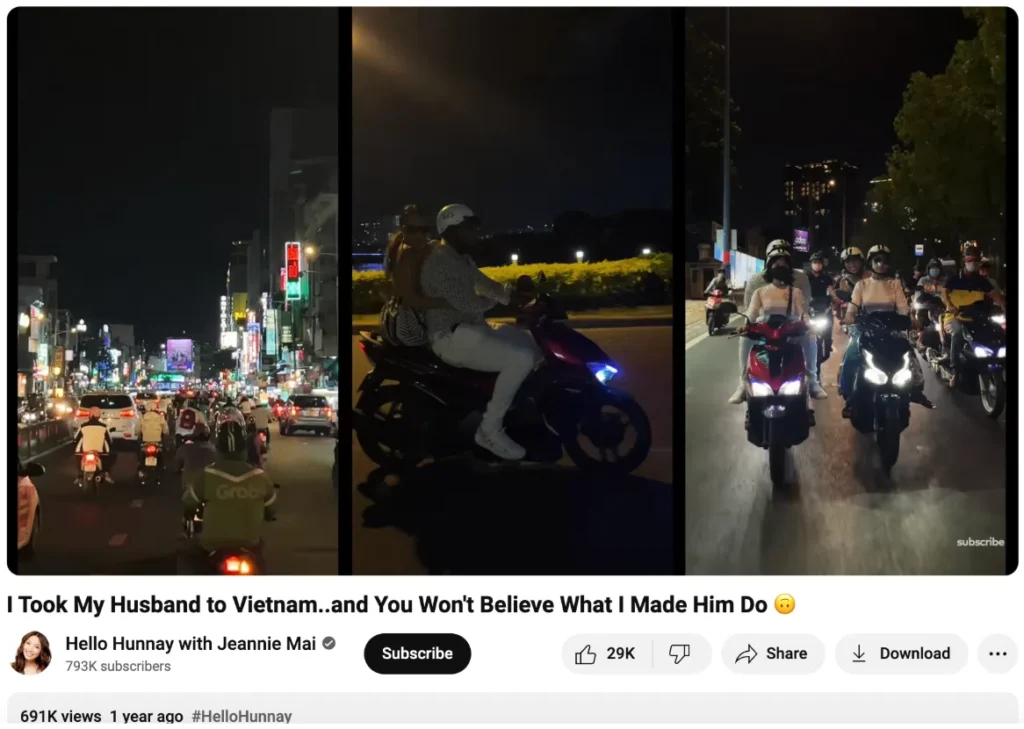
YouTuber Jeannie Mai balances her channel with a mix of travel, family, and cooking content.
Key features:
- Content formats: Long-form videos, YouTube Shorts, Live streaming, Podcasts
- Monetization tools: Super Thanks, Super Chat, Premium revenue sharing, BrandConnect
- Shopping features: Merchandise shelf, in-video product tagging
- Engagement tools: Clips, Chapters, Cards, End Screens

Andrew Huberman, an American neuroscientist, shares podcast videos on YouTube with science-based tools to improve daily life. Each two to three-hour episode explores practical, research-backed insights.
Audience and engagement rates
- Largest user demographic: Gen Z (nearly 90 percent) are on YouTube more than any other social platform.
- Engagement rate:
- Nano-creators: 1.9 percent
- Mega-creators: 3.4 percent
- Platform preference: Marketers consider YouTube the leading social media platform for precise audience targeting.
Latest YouTube updates
Content formats
- YouTube Shorts is a major focus, with enhanced vertical video optimization to improve visibility.
- Live streaming enhancements make creators’ real-time interaction smoother.
- Podcasts, Community posts, and Multi-part series add new ways for creators to engage beyond standard videos.
- Premieres let creators and brands build hype before a video goes live.
Monetization and shopping features
- Super Thanks, Super Chat, and Super Stickers let fans tip creators.
- Channel Memberships and multi-level subscriptions provide recurring revenue streams.
- Merchandise shelf and Shopping features integrate e-commerce directly into videos.
- BrandConnect connects brands with creators for seamless sponsorships.
- Premium revenue sharing allows creators to earn from YouTube Premium subscribers.
Creator and community tools
- Enhanced YouTube Studio, Copyright Match Tool, and Content ID System help creators manage and protect content.
- Advanced analytics provide deeper insights into video performance.
- Community engagement tools like Clips, Chapters, Cards, and End Screens make content more interactive.
Other social platforms
Why brands and creators use it: Facebook boasts an impressive three billion monthly active users worldwide. It’s a powerful tool for brands targeting specific demographics and building engaged communities.
How brands and creators use it: Brands use Facebook Pages and Groups to create loyal communities, while creators engage audiences through Live videos, Stories, and Reels. Paid promotions and sponsored content help amplify reach.

Dr. Kojo Sarfo creates insightful and engaging videos on mental health, providing valuable support and guidance to his audience.
Key features:
- Advanced ad targeting via Facebook Ads Manager
- Facebook Groups for niche communities
- Facebook Marketplace for selling products
- Live video and Reels for real-time engagement
Audience and engagement rates:
- Largest user demographic: Users between 55 and 64 are the most active on the platform, spending an average of 45 minutes daily.
- Engagement rate: An average of 0.15 percent
- Platform preference: 41 percent of creators prefer the platform.
Snapchat
Why brands and creators use it: Snapchat’s ephemeral content creates urgency and exclusivity, making it ideal for grabbing attention. It’s particularly effective for brands targeting younger audiences.
How brands and creators use it: Brands use Snapchat for behind-the-scenes content, while creators leverage Stories and Spotlight to engage followers. Sponsored Lenses and AR filters help brands boost visibility.
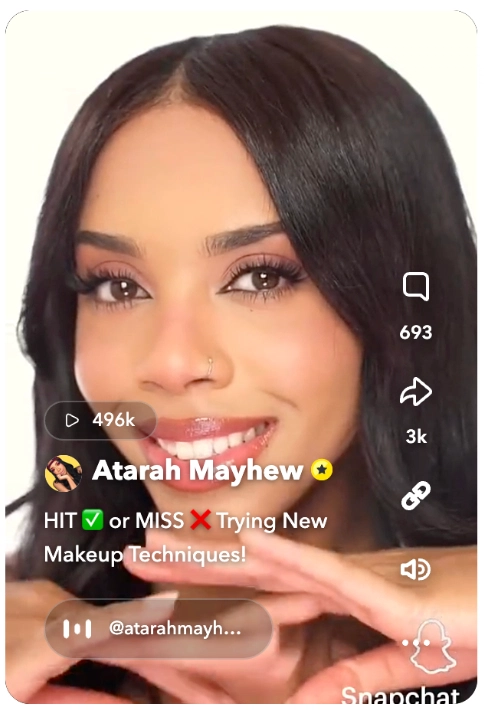
Atarah Mayhew channels her creativity into makeup artistry, sharing beauty tutorials and transforming herself into captivating characters.
Key features:
- Snap Ads and Sponsored Lenses for immersive brand experiences
- Spotlight and Discover for wider content reach
- AR features for interactive storytelling
Audience and engagement rates:
- Largest user demographic: Ages 18-24 make up 38 percent of users.
- Engagement rate: Snapchat users are highly active, with the average user opening the app more than 30 times daily.
- Platform preference: Only four percent of creators use Snapchat.
Twitch
Why brands and creators use it: Twitch dominates the live-streaming space, offering direct, real-time engagement. It’s particularly effective for brands looking to reach gaming, tech, and entertainment audiences.
How brands and creators use it: Brands partner with streamers for sponsored live streams and in-stream ads, while creators use Twitch to build tight-knit communities through gameplay, Q&A sessions, and creative content.
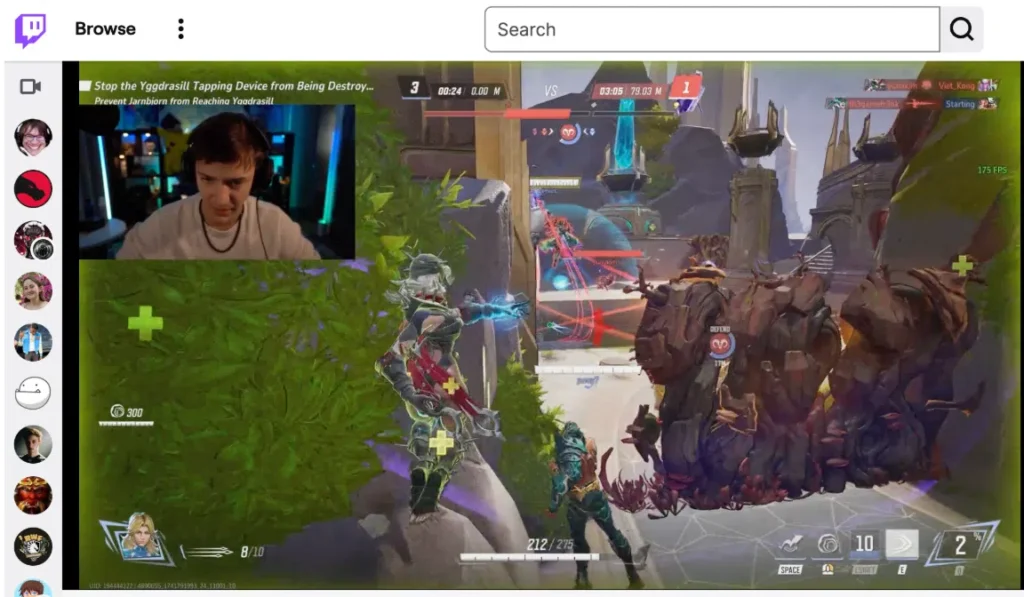
Ninja is the most followed creator on Twitch, live-streaming to an audience of 19+ million followers.
Key features:
- Subscriptions and donations for monetization
- Live chat and interactive overlays for real-time engagement
- Custom emotes and branded extensions for personalized experiences
Audience and engagement rates:
- Largest user demographic: Ages 25-35, accounting for 52 percent of users.
- Engagement rate:
- Measuring engagement on Twitch is tricky due to its live format, with chat interactions not publicly reported.
- Major streamers typically see a 7 to 15 percent chat engagement rate, though this varies by game.
Does influencer marketing work?
Yes! Influencer marketing delivers real results across industries, helping brands boost awareness, drive sales, and cut content production costs. Here are some compelling examples and statistics from other brands:
- 2 in 3 brands plan to increase their influencer marketing budgets, proving its effectiveness.
- iStock by Getty Images partnered with micro and mid-tier creators to promote its Generate AI product, generating 15 million impressions and significantly increasing website traffic and conversions.
- B&Q, the UK’s leading home improvement retailer, integrated creators into its affiliate program for a Christmas campaign. With just 42 pieces of content, they smashed their campaign target by 283 percent.
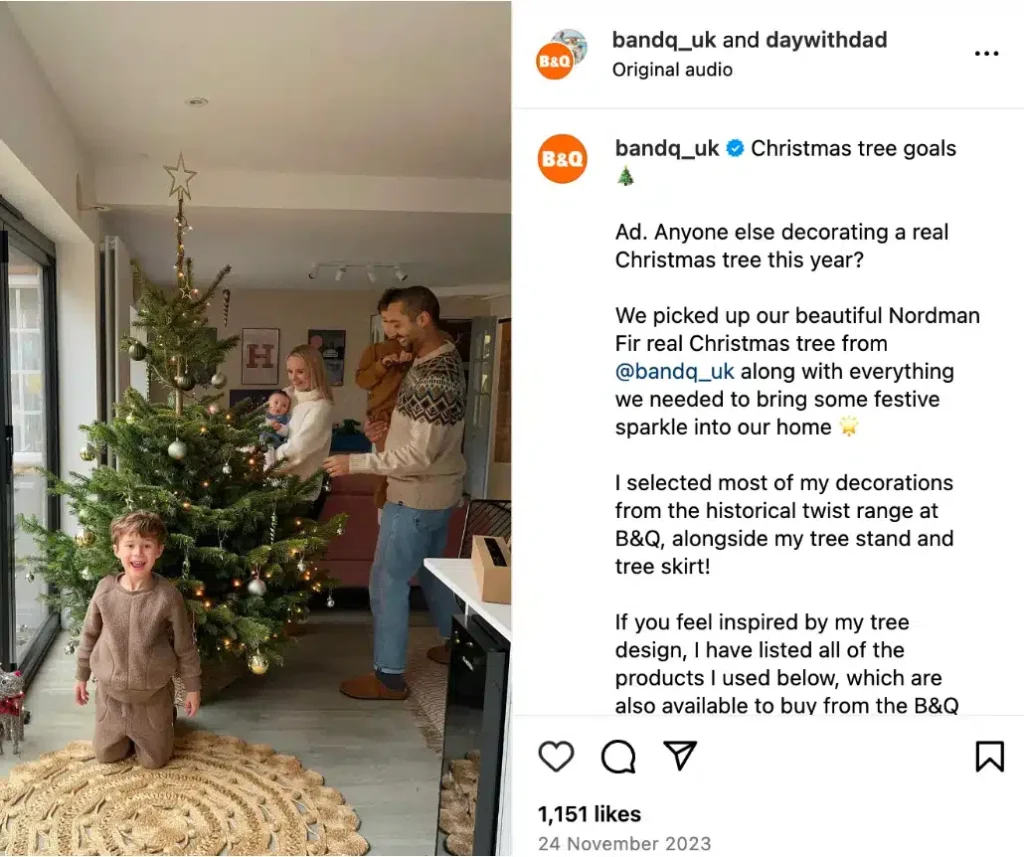
Warren Hoyte shared a special family bonding moment, drumming up excitement over decorating their B&Q Christmas tree.
Creators help get your brand in front of a trusted audience, making it easier to drive conversions. Plus, partnering with creators costs less than traditional production and gives you fresh, engaging content to boost your channels.
2. What are influencer marketing campaigns, and how do they work?
Influencer marketing campaigns use the reach and credibility of social media creators to promote a brand, product, or service. By partnering with creators who align with your target audience, brands can create authentic content that resonates, fosters trust, and drives engagement.
When done right, these campaigns boost awareness, build credibility, and lead to real conversions.
Creator recruitment
Finding the right creators is the foundation of a successful campaign. Follower count isn’t everything—brands should also consider:
- Audience demographics – Does their audience match your ideal customer?
- Engagement rates – Are their engagement rates outperforming bigger budget creators?
- Content quality – Do they create compelling, brand-aligned content?
- Authenticity – Is their connection with their audience real?
Many brands use creator marketplaces, such as impact.com/creator, and partnership platform tools to discover creators. However, true success comes from strong relationships built on clear communication, trust, and shared goals.
Seamless onboarding and open communication are key to success
Once you’ve found the right creators, a smooth onboarding process is key to campaign success. Set them up for success by providing:
- A clear brand overview and campaign objectives.
- Creative briefs, style guides, and examples (think mood boards) to inspire their content.
- Key messaging without being overly prescriptive—authenticity is what makes influencer marketing work.
While aligning creators with your goals is important, giving them creative freedom is just as crucial. They know their audience best, and content that feels natural will drive the most engagement.
Open communication is the foundation of a strong partnership. Regular check-ins, prompt feedback, and support help creators feel confident in delivering high-quality content. When creators feel valued and empowered, they’re more likely to go above and beyond to make your campaign successful.
How do you track and measure return on investment (ROI) for an influencer campaign?
Measuring the success of an influencer campaign involves setting clear goals and tracking the right metrics. Here’s how to ensure your efforts drive real results:
- Define success upfront: Are you aiming for brand awareness, engagement, website traffic, or direct sales?
- Track engagement metrics: Monitor likes, comments, shares, and saves to gauge audience interaction.
- Measure reach and impressions: How many people viewed the content and how often.
- Use unique links or discount codes: These help track conversions directly from an influencer’s audience.
- Analyze website traffic: Tools such as Google Analytics can show spikes in visits from influencer referrals.
- Monitor sales impact: Compare revenue before, during, and after the campaign to measure direct influence.
- Compare cost vs results: Assess whether the revenue, engagement, or awareness gained justifies the investment.
- Gather qualitative feedback: Customer comments and sentiment can reveal the campaign’s impact on brand perception.
Combining hard data with audience insights allows you to fine-tune your approach and maximize future campaign success.
Many brands turn to impact.com / creator for deeper performance insights across campaigns, platforms, and creators. With intuitive dashboards, you can easily measure campaign performance and make smarter, data-driven decisions. Eliminate low-performing strategies and double down on the ones that drive results.
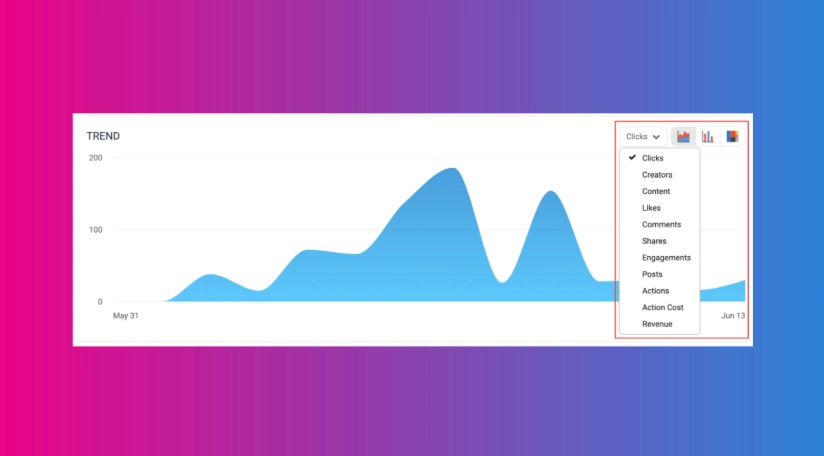
Successful influencer marketing campaigns in action
The most successful campaigns partner with the right creators, empower them to craft compelling stories, and develop messages that resonate with an engaged audience.
Three brands got it right: using creators and authentic UGC to boost awareness, engagement, and sales.
Bowlero leverages UGC to showcase its bowling alleys as a fun night out
Bowlero isn’t your typical bowling alley—it’s an entertainment destination with neon lights, craft cocktails, and a modern take on a classic pastime. To spread the word, the brand turned to creators on TikTok and Instagram to showcase the fun and social experience of a night at Bowlero.

@scottdynamo was one of the micro-creators Bowlero partnered with.
How the campaign worked: Bowlero partnered with impact.com’s creator services team to identify creators who could showcase their brand and establish Bowlero as the ultimate destination for a night out. Instead of scripted ads, creators were encouraged to document their real experiences, showing off the food, bowling, and vibe of Bowlero.
Why the campaign worked: By leaning into authentic storytelling and short-form video, Bowlero made bowling feel fresh, fun, and shareable. TikTok and Instagram were the perfect platforms to capture the energy of a night out, and their influencer partnerships helped tap into Gen Z and Millennial audiences looking for new experiences.
The results:
- 4.4 million+ total impressions
- 2.8 million+ people reached
- 23,000 total engagements
BBQGuys doubled engagement and showcased their product’s versatility
BBQGuys is a go-to destination for grills, outdoor kitchens, and all things barbecue. To reach more customers and inspire people to get creative with their grilling, they partnered with a mix of micro and mid-tier creators who could show off BBQGuys’ products in action.

Creator Rachel Faulkner, known for her road trip adventures, showcases her grilling expertise on the move—featuring BBQGuy’s portable, travel-friendly grills.
How the campaign worked: Rather than just featuring traditional backyard barbecues, BBQGuys partnered with impact.com’s creator services team to discover creators and manage the campaign. Together, the teams discovered creators from different backgrounds to highlight how grilling fits into various lifestyles—whether city dwellers using compact grills or road-trippers cooking over a fire.
Why the campaign worked: Instead of just showing off fancy product shots, BBQGuys focused on real-life grilling moments, making it feel fun and approachable for everyone. Plus, they tapped into the hot trend of outdoor cooking content, which always does great on social media.
The results:
- 636,000+ people reached
- 311,000+ organic impressions
- 5.5% engagement rate (double the benchmark)
Ellos set up a cost-efficient influencer program to increase average conversions
Ellos is a women’s fashion brand that wanted to move beyond traditional ads and embrace influencer marketing in a way that felt authentic. Instead of paying creators for one-off posts, they created a long-term, performance-based influencer program to promote their collections year-round.
How the campaign worked
Ellos worked with micro-creators—everyday creators who genuinely loved the brand and could show how they styled Ellos pieces in their daily lives. By giving creative freedom, the content felt natural and relatable, not overly staged.
Why it worked
Rather than focusing on short-term buzz, Ellos built lasting relationships with creators who consistently featured their clothing. This led to ongoing engagement and a steady stream of content that kept Ellos top of mind for their audience.
The results
- $78,000+ in revenue generated
- 980+ pieces of influencer content created
- 2 million+ impressions
3. Best practices for launching an influencer marketing campaign
Executing a successful influencer marketing campaign requires more than simply choosing a creator and leaving the rest to chance. Achieving meaningful results—be it increased brand awareness, higher engagement, or boosted sales—demands a well-defined and strategic approach. That means choosing the right creators, setting clear goals, and tracking performance to guarantee your investment pays off.
Here’s how to set your campaign up for success.
Three tips to develop a sustainable influencer marketing strategy
A long-term influencer strategy delivers better results, stronger relationships, and more scalable success. Here’s how to build one using three tips:
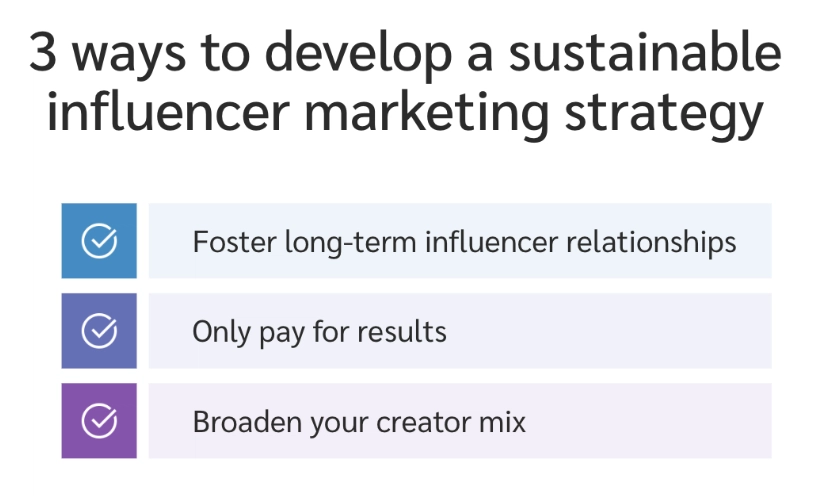
Foster long-term influencer relationships
Influencer marketing works best when it isn’t a one-off transaction. Instead of overpaying mega-creators for a single post, invest in full life cycle management—from recruitment to performance tracking and ongoing collaboration.
Only pay for results
If you can’t measure it, don’t pay for it. Tie influencer payments to measurable key performance indicators (KPIs) such as clicks, sales, or leads. Use performance-based compensation models and tools that adjust payouts based on results to ensure ROI.
Broaden your creator mix
A successful strategy doesn’t rely solely on big-name creators. Micro- and nano-creators bring niche engagement and authenticity, while larger creators expand reach. A diverse mix keeps content fresh and maximizes campaign impact.
By prioritizing meaningful partnerships, tracking real results, and diversifying your influencer strategy, you’ll create campaigns that don’t just work—but last.
What are the best influencer marketing tools for brands?
Managing influencer campaigns manually—juggling spreadsheets, outreach, and tracking—is time-consuming. The right tools can streamline discovery, management, and performance tracking, making your campaigns easier to scale and more effective.
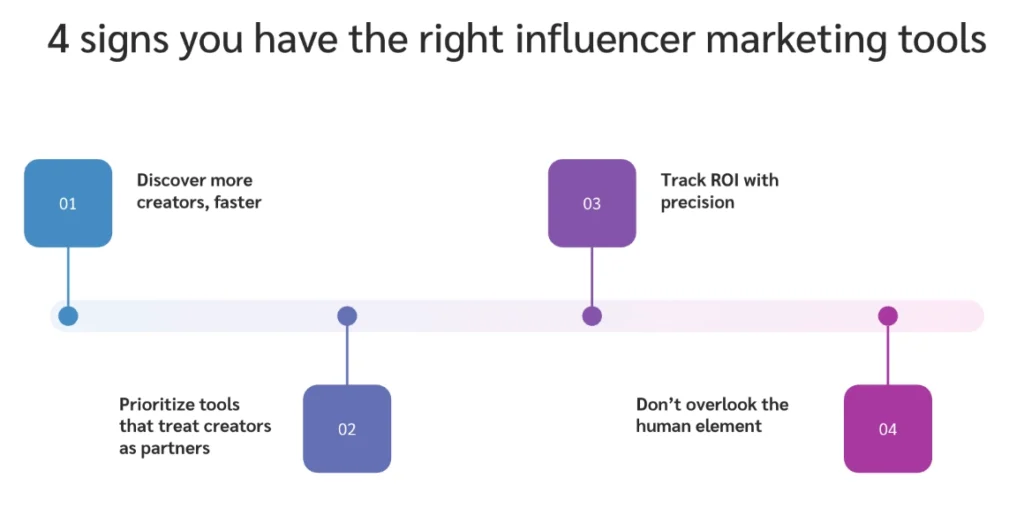
How to choose the right tool for your business
Discover more creators, faster
Use platforms with large, opt-in creator networks like impact.com / creator’s Marketplace, which connects brands with 123K+ ready-to-work creators. Advanced search filters help find creators who align with your brand, while inbound applications allow verified creators to come to you—saving time and improving accuracy.
Prioritize tools that treat creators as partners
Many platforms focus solely on brands, but collaborative tools improve campaign success. Look for influencer portals that simplify communication, task management, and workflow. When creators can focus on creativity instead of admin tasks, results improve.
Track ROI with precision
Avoid blind decisions—choose tools with reliable tracking and cross-device attribution. Performance data should show how each influencer contributes to your goals, allowing you to optimize campaigns in real time.
Don’t overlook the human element
Even with the best software, strong relationships drive success. Keep creators engaged with transparent communication, fair compensation, and real collaboration. Features like impact.com / creator’s live chats make it easy to stay connected.
Invest in the right influencer marketing software to spend less time on logistics and more time on strategy. The result? Scalable campaigns, stronger partnerships, and real business growth.
4. Influencer marketing tips for your brand
Successful influencer marketing isn’t just about picking someone with a big following and hoping for the best. It’s about building real partnerships, setting clear expectations, and allowing creators to create content that feels natural.
Here are some key tips to get the most out of your campaigns:
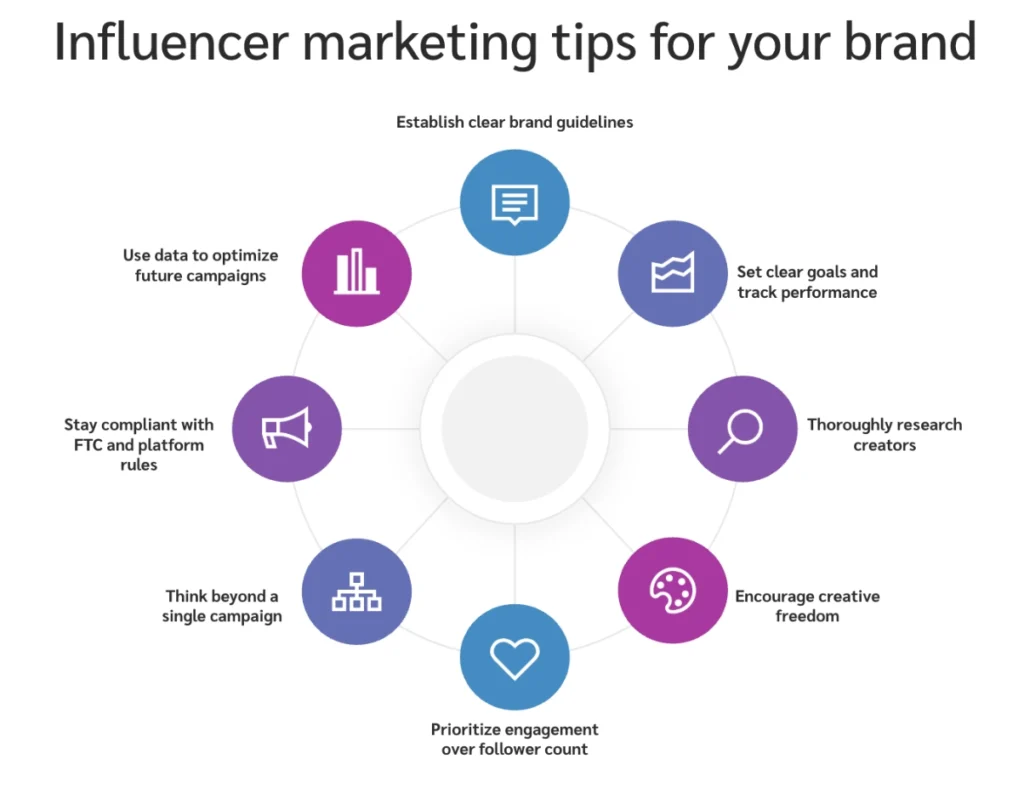
Establish clear brand guidelines
Make sure creators know your brand’s voice, tone, and visual style so their content aligns with your identity. Provide clear do’s and don’ts, but avoid being too rigid. The best content feels authentic, not overly scripted, and that’s where creators excel.
Set clear goals and track performance
What do you want from your influencer campaign? More brand awareness? Engagement? Sales? According to Influencer Marketing Hub, brands prioritize:
- Sales (36 percent)
- Brand awareness (24 percent)
- UGC (19 percent)
- Community building (12 percent)
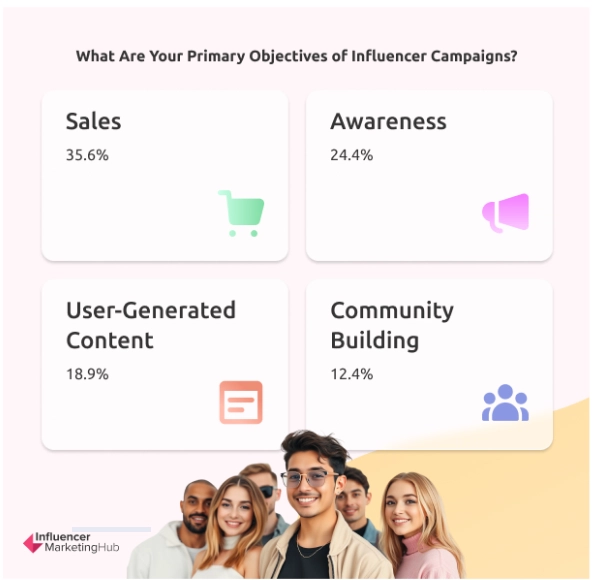
Once you’ve decided on your goals, define them upfront for creators. Then, set measurable KPIs to track progress—clicks, conversions, or audience sentiment.
- Use cross-platform performance metrics to compare results across Instagram, TikTok, YouTube, and other platforms.
- Measure engagement quality over vanity metrics—a smaller, engaged audience is better than a large but passive one.
- Track conversion rates, ROI, and brand lift to understand the campaign’s real impact.
Thoroughly research creators
Follower count isn’t everything. Dig into engagement rates, audience demographics, and past brand collaborations to ensure an influencer aligns with your brand. Look beyond surface-level stats and use data-driven tools to analyze an influencer’s audience insights across platforms.
Encourage creative freedom
Influencers know their audience better than anyone, so their content produces results. You empower them to produce authentic, engaging stories by giving them the freedom to be creative. When creators control their messaging, the result is content that truly resonates.
- Allow creators to adapt content to platform-specific best practices (what works on TikTok won’t necessarily work on Instagram).
- Be open to UGC. This authentic, less polished content often outperforms overly curated ads.
- Trust creators to know what resonates with their audience.
Prioritize engagement over follower count
A smaller influencer with strong audience interactions is often more valuable than a big-name creator with passive followers. Engagement quality matters more than reach.
- Look at comment quality, shares, and saves, not just likes.
- Partner with micro- and nano-creators who tend to have higher engagement rates.
- Run A/B tests with different creators to see what drives the best results.
Think beyond a single campaign
The best influencer marketing strategies build long-term relationships, rather than one-off sponsorships. Consider:
- Developing ambassador programs for ongoing collaborations.
- Repurposing influencer content across ads, emails, and social channels.
- Offering production support and strategy consulting to help creators create even stronger content.
Stay compliant with FTC and platform rules
Transparency matters. Creators should follow Federal Trade Commission (FTC) disclosure requirements and adhere to platform-specific guidelines for sponsored content. This will protect your brand and the creator from potential issues.
Use data to optimize future campaigns
Don’t just run a campaign and move on—analyze the data and refine your strategy for future partnerships.
- Use real-time analytics to track performance while the campaign is live.
- Run brand lift studies to measure long-term awareness.
- Test different attribution models to understand which influencer activities drive the most conversions.
FAQs
To measure ROI effectively in 2025, use advanced analytics tools that track metrics such as conversion rates, cost per acquisition (CPA), and customer lifetime value (CLV). Platforms now offer in-depth insights into influencer-generated content performance, making attributing sales or website traffic easier. Use custom affiliate links and real-time dashboards to monitor results across campaigns.
The best platforms in 2025 depend on your target audience. TikTok leads for Gen Z engagement, while Instagram remains a go-to for lifestyle and e-commerce brands. YouTube excels in long-form and educational content, while LinkedIn and Twitter gain traction for B2B influencers.
Micro-influencers offer higher engagement rates and stronger trust within niche audiences, making them ideal for targeted campaigns. Macro-influencers, on the other hand, deliver broader reach, which is valuable for brand awareness. A hybrid strategy leveraging both, based on campaign goals, ensures the best results in 2025.
Staying compliant in 2025 means adhering to FTC guidelines by ensuring all sponsored content is disclosed. Update creator contracts to reflect these requirements. Use monitoring tools to verify influencer compliance across all posts, and prioritize transparency to maintain audience trust. Staying informed about global advertising regulations is a regular part of your marketing strategy.
Scale your brand with the right creators
Influencer marketing works best when brands focus on the right partnerships, set clear goals, and let creators do what they do best—engage their audience. Building real relationships and tracking performance is key, whether you’re working with nano-creators for niche reach or macro-creators for mass impact.
Ready to launch smarter influencer campaigns? Use impact.com / creator to effortlessly find and manage creators and turn influencer marketing into a growth engine for your brand.
For more ideas and guidance on influencer partnership management, check out these other Impact resources for influencer partnership management:
- Ultimate guide to influencer partnerships (ebook)
- Seven ways to pay influencers today and tomorrow (ebook)
- Different strokes for different influencer folks (ebook)
- How to avoid being catfished by influencer marketing (ebook)
- Are you ghosting your influencers? (ebook)
- Your influencer program is broken (ebook)
- Scaling influencer marketing globally (ebook)
- What influencers really want (video)



